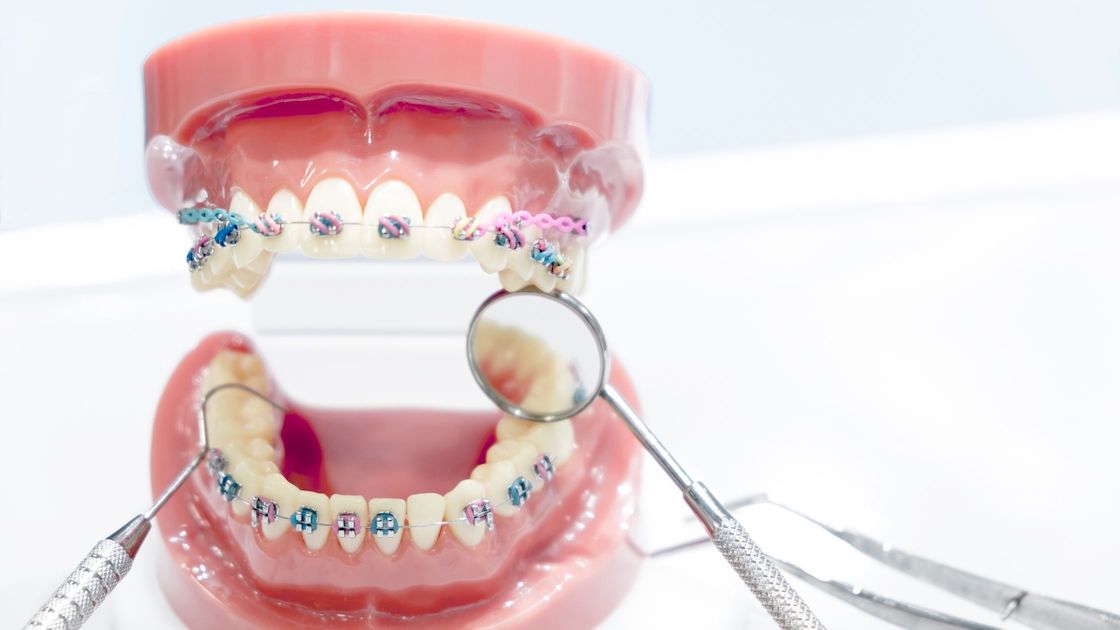Let´s explore 5 types of brackets.
Are you embarking on your orthodontic journey and in need of braces? It’s understandable to have numerous questions, such as the cost disparities between Types of brackets, the level of discomfort associated with them, the efficacy of different options, and the aesthetics of each one.
In this post, we aim to address all of your concerns regarding fixed orthodontics and appliances .
What are this Types of brackets?
To begin with, it’s important to clarify what brackets are, as they are often mistaken for braces, plates, and other types of treatments.
Brackets are small, typically round or square pieces that adhere to the surface of the teeth using a specially designed adhesive composed of resin. They are then connected to each other by a wire that generates movement to achieve the desired outcome: a beautiful, perfectly aligned smile and a properly functioning bite.
Types of brackets
Thankfully, the field of orthodontics has made significant advancements, providing patients with a range of bracket types that offer increased efficiency, faster treatment times, and improved aesthetics. In the past, the only available brackets were bulky and irritating, causing damage to the enamel, prolonged treatment times, and significant discomfort due to their unfriendly fins. However, today’s brackets offer a much better experience, addressing many of the concerns that patients have when starting orthodontic treatment.
In this article, I will provide a comprehensive overview of the advantages and disadvantages of each type of bracket, empowering you to make an informed decision when selecting the best option for your unique needs. It’s important to note that not all dental clinics prioritize the patient’s best interest over their own profits, so it’s crucial to do your research and seek professional advice to ensure you receive the optimal treatment. I highly recommend undergoing an initial exam, submitting a radiography, and confirming that the practitioner is a certified orthodontic specialist before beginning treatment. This step is essential in identifying any potential issues and ensuring that the selected treatment plan is safe and effective.
It’s crucial to have radiographs taken before starting orthodontics as they can reveal underlying issues like root reabsorptions that may be exacerbated by the treatment. If your orthodontist doesn’t take these precautions, it’s advisable to find another clinic. To determine whether a practitioner is a specialist in orthodontics, you can check if they have completed the necessary 3-year training, which entails significant study to ensure that the movements they make in your mouth are carefully considered to avoid causing harm. Unfortunately, there are some dentists who have only completed 15-day courses in orthodontics and offer low prices, but the quality of their work is questionable and can cause more harm than good.
1. Colored Brackets
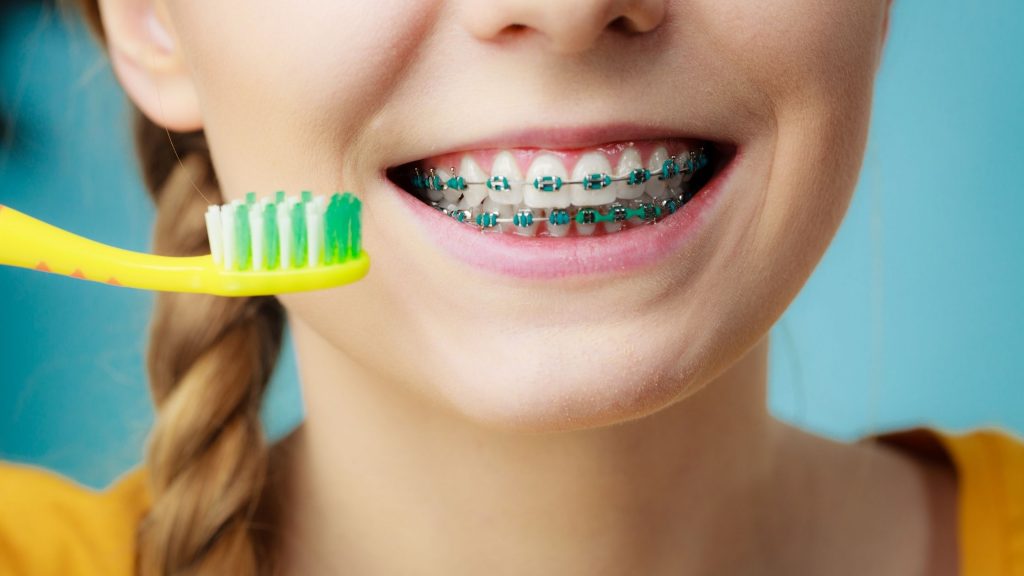
The conventional brackets, which are available in metallic or colored options, have been used for a long time, but now they are smaller and more comfortable compared to the past. In the past, these brackets caused several difficulties and mouth sores due to their large fins. However, these brackets now offer a variety of colors, and you can even choose different colors for each tooth by changing the rubber bands at every appointment. This is the most affordable and traditional option available.
2. Transparent brackets.
Transparent brackets are a great choice for patients who need slightly more complicated orthodontic treatments than can be achieved without brackets, but still want an aesthetic option. However, I have another important warning to emphasize in capital letters!
I want to caution you about a concerning trend in the orthodontic industry. Patients have been seeking treatment with low-quality, transparent orthodontic brackets made from plastic material imported from China. These brackets are cheap imitations of high-quality transparent brackets from well-known commercial brands.
Unfortunately, patients have been experiencing severe consequences such as root reabsorption and dental damage due to lengthy and traumatic treatments. To avoid falling for this trap, it is crucial to differentiate between the real variety and the poor quality copy. The first telltale sign is the price; the fake brackets are offered at extremely low prices, comparable to those of metal brackets. This is because they are made of plastic, unlike the sapphire material used in genuine transparent brackets.
It’s important to note that orthodontic treatment with brackets is a gradual process that requires patience and cooperation from the patient. The orthodontist may need to make adjustments and changes to the treatment plan as needed based on the patient’s progress and response to the treatment.
However, if you notice that there is no change in your orthodontic treatment from one appointment to another, it could be a red flag. This could indicate that the orthodontist is not properly monitoring your progress or making necessary adjustments to the treatment plan.
It’s also important to keep in mind that proper care and maintenance of your braces can have a significant impact on the duration of your treatment. Avoiding hard, sticky, or sugary foods, and wearing any recommended appliances or rubber bands as directed can help ensure that your treatment progresses smoothly.
If you have any concerns about the progress of your orthodontic treatment, don’t hesitate to speak with your orthodontist. They can provide you with valuable information and reassurance, and may be able to make changes to your treatment plan if necessary.
3. Autoligued brackets
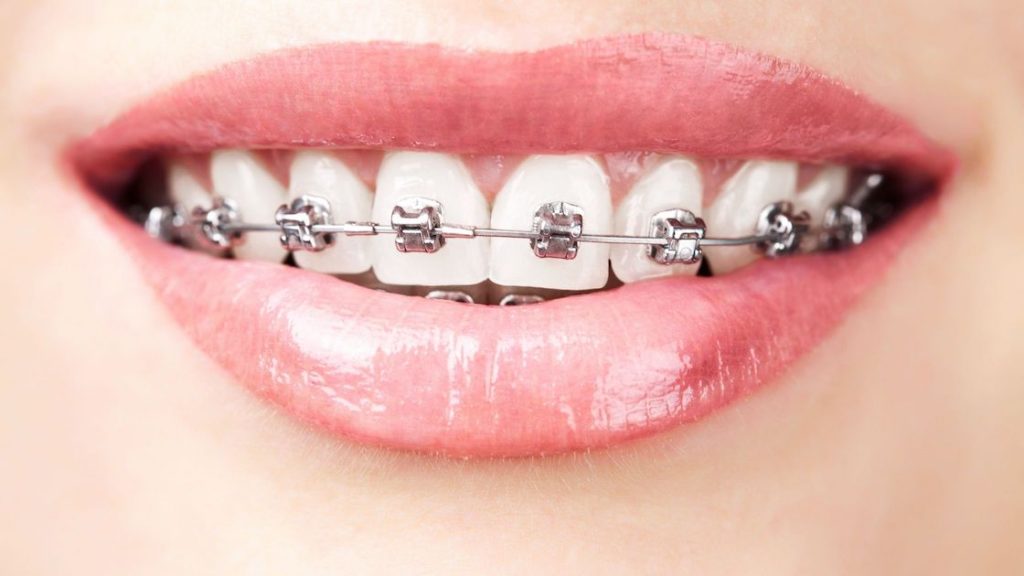
Autoligating brackets are a treatment option that has made significant progress in recent times, and it provides numerous benefits compared to other systems. One of the main advantages of this system is that it eliminates the need for elastic or metal ties to hold the archwire in place, which makes the process more comfortable and efficient. Additionally, the reduced frictional forces between the archwire and bracket lead to faster treatment times and fewer adjustments needed.
The autoligued bracket system, which is one of the most advanced orthodontic systems, differs from traditional systems in several ways. Firstly, it does not use fins and rubbers, but instead uses a type of clip that produces a significant change in the results it achieves. The absence of rubbers means that this system produces the least amount of friction, which leads to wires moving more quickly and efficiently during the entire orthodontic process, not just during activation appointments.
This system’s continuous movement of teeth throughout the month also means that orthodontic treatments can be completed in half the time without affecting the tooth root or nerve. This system’s low friction and continuous movement also allow for more complex movements to correct various dental problems such as crooked teeth, gaps, open bites, and bruxism. This system’s unique features make it an excellent choice for patients who want a quicker, more efficient, and less invasive orthodontic treatment.
In my opinion, I suggest the use of this system for both simple and complex orthodontic treatments due to its ability to deliver faster results, especially for more challenging cases. Additionally, this system offers a transparent self-ligating bracket option, which combines the benefits of self-ligating brackets and aesthetics. However, it is worth noting that this type of bracket may not be as efficient as metal brackets, as it may present more friction due to the material used. Although metal brackets are more effective, they are not as aesthetically pleasing as the transparent option.
The main drawback of autoligating brackets is the cost, making it an unaffordable option for many patients. Additionally, the transparent self-colligating bracket version is slightly more expensive than the metal self-colligating brackets. Another disadvantage of this system is its aesthetics, as the metal version is not as visually appealing as other options such as bracketless orthodontics. Finally, it has some limitations in terms of movements that can be achieved, compared to other systems.
4. Zafiro Brackets
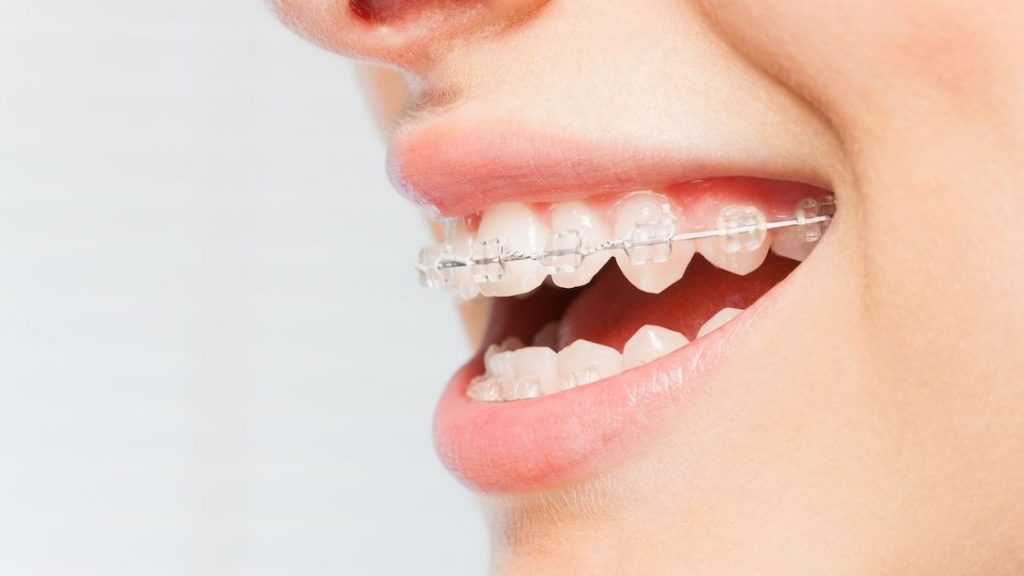
I highly recommend the use of Sapphire brackets, which are transparent brackets made of a stronger material compared to the previously mentioned cheap imitation plastic brackets imported from China. While Sapphire brackets may not be as fast as the self-colligated transparent brackets, they are a more affordable option.
The advantage and disadvantage of these brackets are linked, as their main advantage is also their main drawback. The cost of these brackets is higher than metal brackets but lower than transparent self-colligated brackets. However, this cost is a double-edged sword – if you prioritize aesthetics over price, then these brackets may be the right choice for you. Although they are slower than metallic brackets, they are faster than bracketless orthodontics.
5. Ceramic brackets
Ceramic brackets have become less popular over time due to their tendency to stain yellow as the treatment progresses. Patients sometimes mistake sapphire brackets for ceramic brackets, but they are different. To summarize, it’s important to consider which technique is better in each area.
- For those looking for an affordable option, color brackets or metal brackets (also known as Roth or minibracket orthodontics) are recommended as they are relatively economical.
- Most aesthetic top: Orthodontics without brackets
- The orthodontic system that offers the highest speed and efficiency is autoligating orthodontics.
How to place the brackets
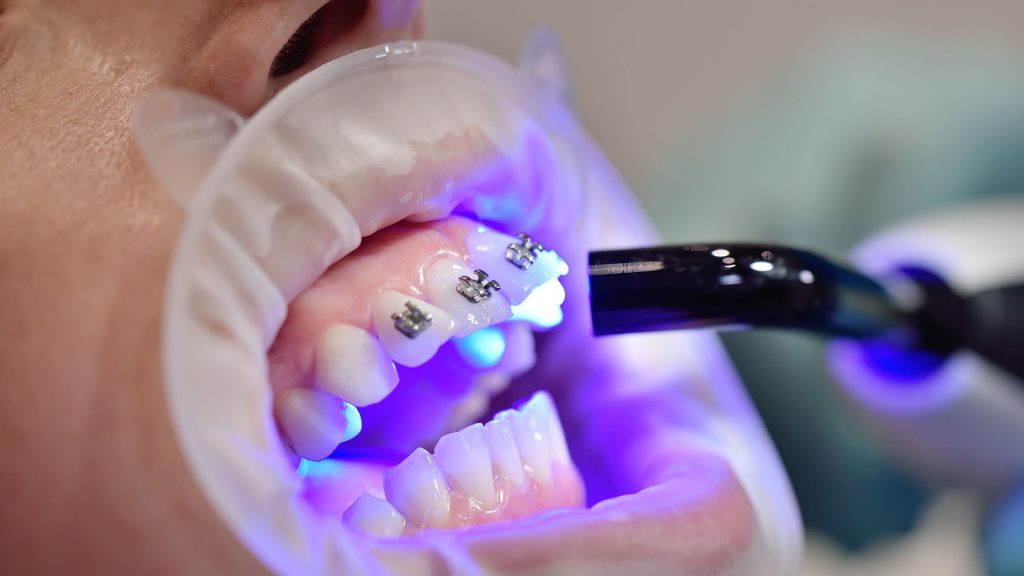
The installation of brackets is a critical moment in orthodontics, and it involves more than just gluing them onto the teeth. Proper measures and proportions must be followed to achieve symmetry and divine proportions, especially in the realm of dental aesthetics. If the brackets are improperly positioned, it can cause harm to the root, nerve, and even twist the teeth from their original position.
During the appointment to put brackets, several steps are taken to ensure that the procedure is done correctly. The first step involves isolating the teeth using cotton and an opening. This is important because any saliva on the teeth can damage the adhesion of the special resin that is used to attach the brackets to the teeth. Next, an initial cleaning is performed using bicarbonate to remove any bacterial plaque. After rinsing and drying the teeth, orthophosphoric acid is applied to the surface. Although it appears as if the acid is being injected into the tooth, it is actually a gel in a syringe that is applied to the surface of the tooth.
Once the teeth are rinsed again, an adhesive is applied to the surface of the tooth and the bracket is attached in the desired position. The orthodontist then uses a blue light lamp to cure the resin and harden the adhesive. The patient is also given instructions on how to properly care for their teeth and brackets during the course of their treatment. By following these instructions, patients can ensure that they will achieve the best possible results from their treatment.
Before and after
Brackets can bring about remarkable and authentic changes before and after treatment, which we now utilize extensively in our clinic through a procedure referred to as smile design with orthodontics. The process begins by installing brackets to straighten the smile and fix the bite, and once the entire orthodontic process is completed, we perform a combined dental whitening treatment, followed by meticulously crafting the edges using high aesthetic resin by hand.
The outcome of the treatment is remarkable as it provides a natural-looking result that is easy to maintain without the need for any cutting. Furthermore, it is more durable over an extended period. The only drawback is that the entire process takes more time, as it involves orthodontic treatment, teeth whitening, and microdesign of the edges. Despite the additional time required, the final results are undoubtedly worth the wait and will leave you satisfied.

